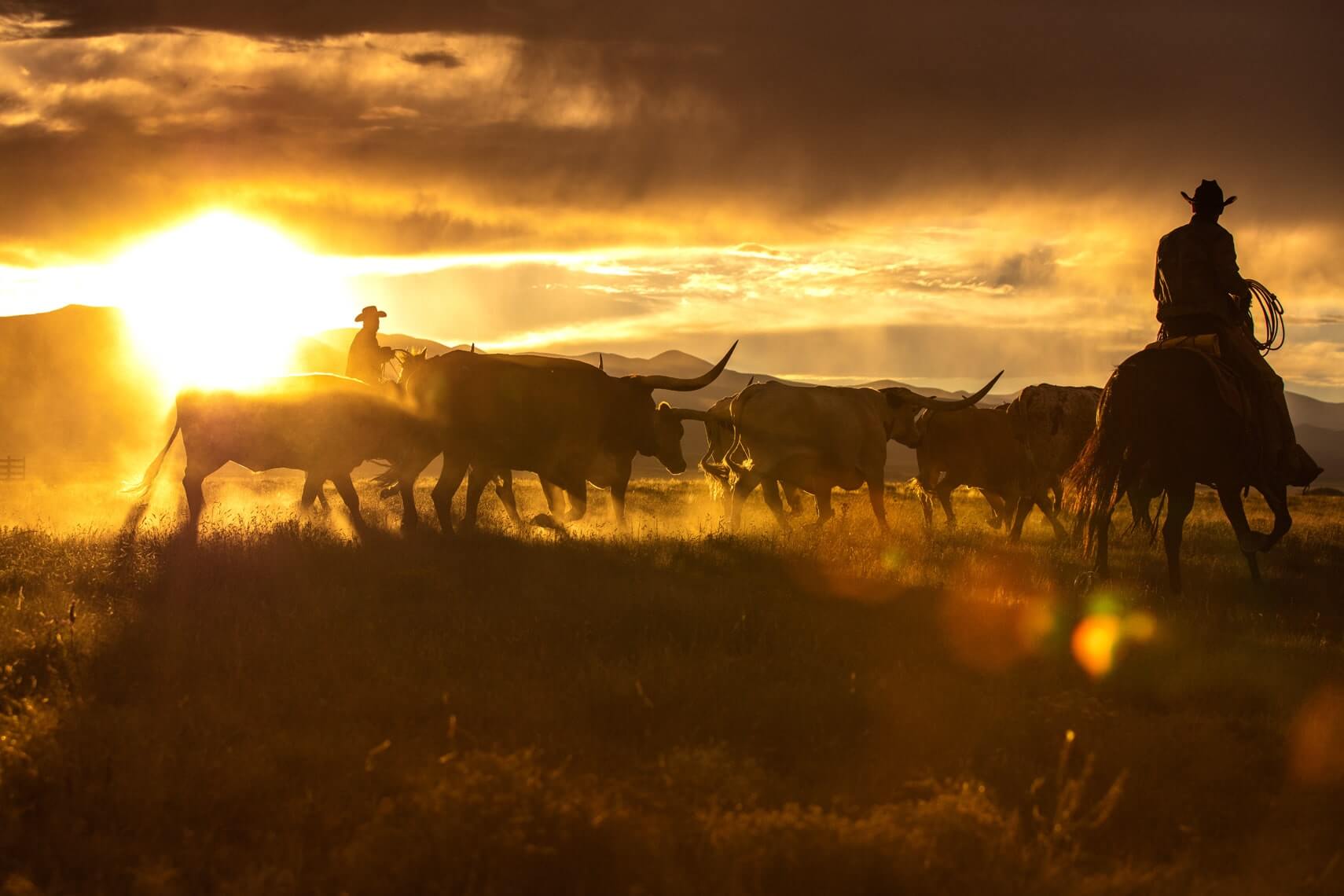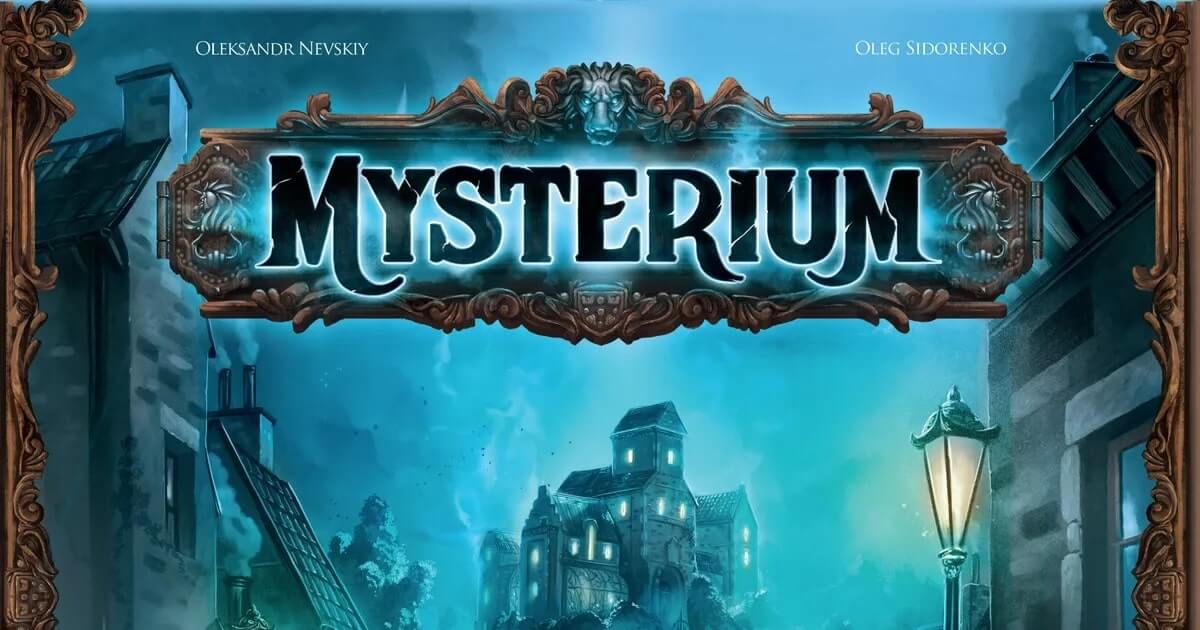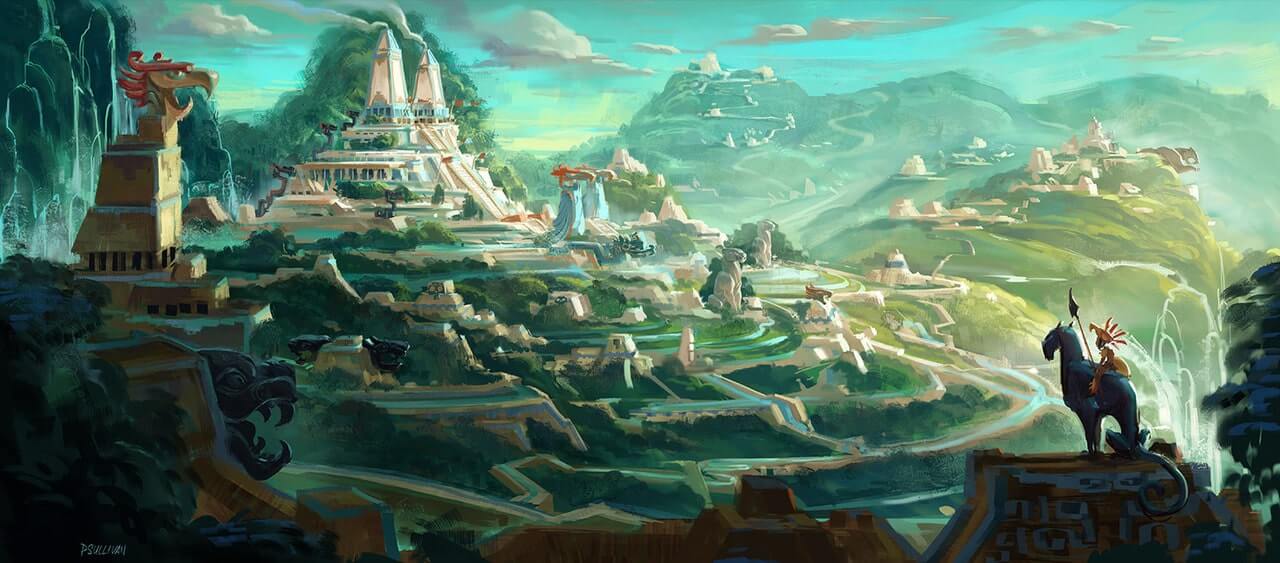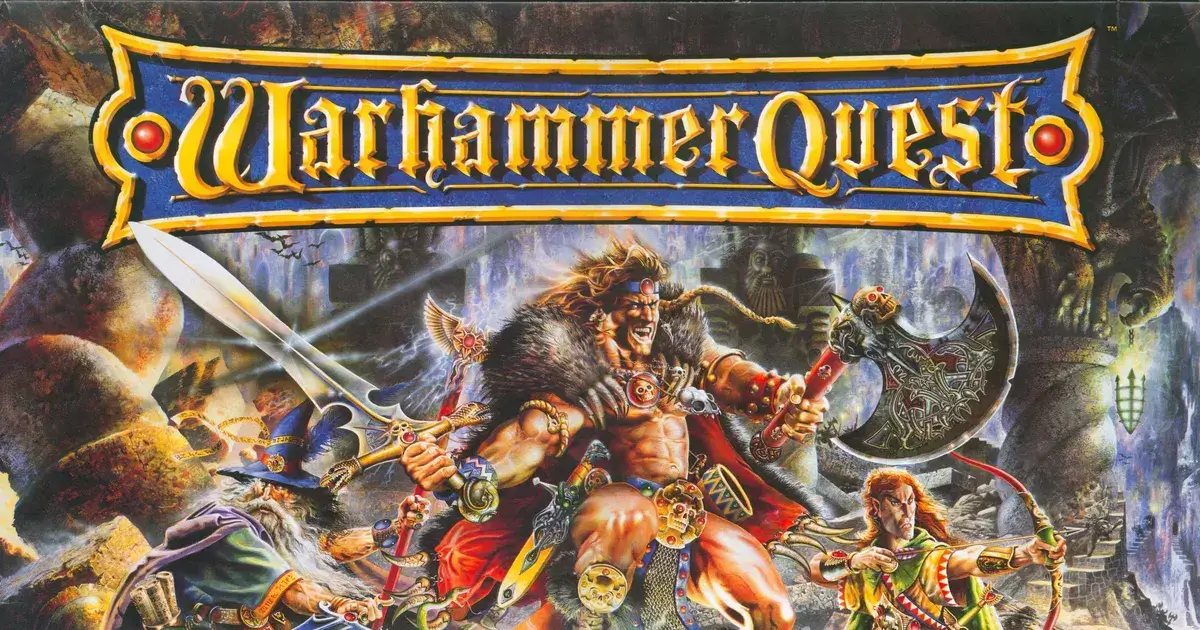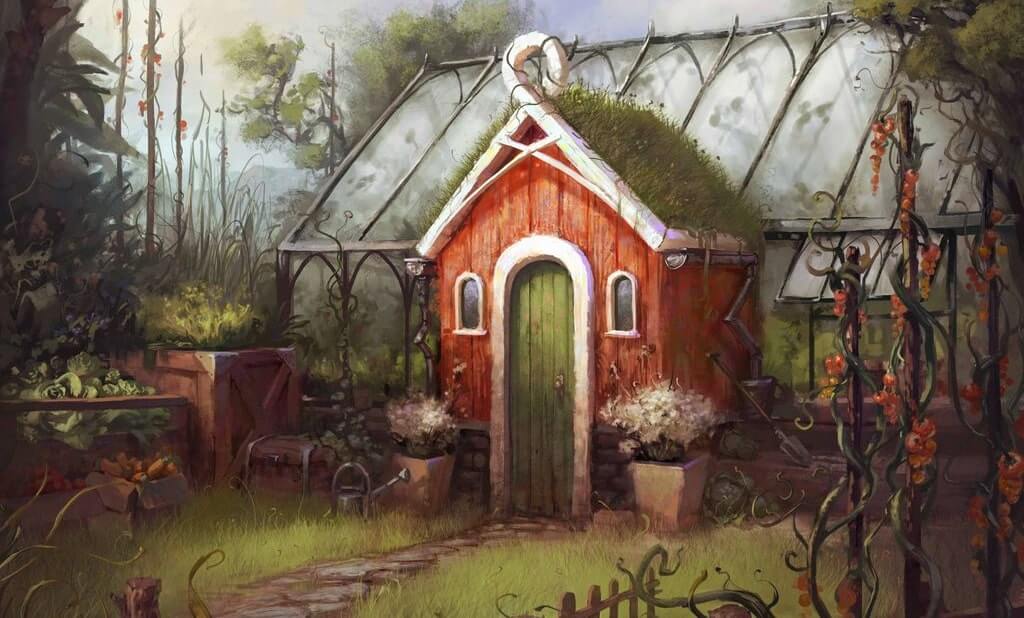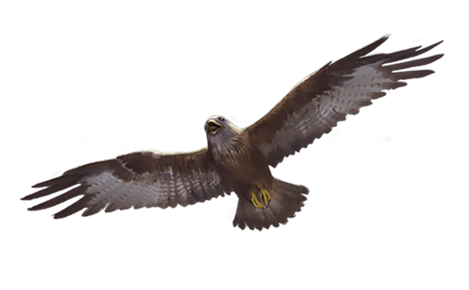In the late 1800s, when the American West was still untamed and largely unexplored, there was a great demand for beef in the eastern United States. Cattle ranchers in Texas and other western states saw an opportunity to make a fortune by driving their herds north to the railheads in Kansas City, where the cattle could be loaded onto trains and shipped to markets across the country.
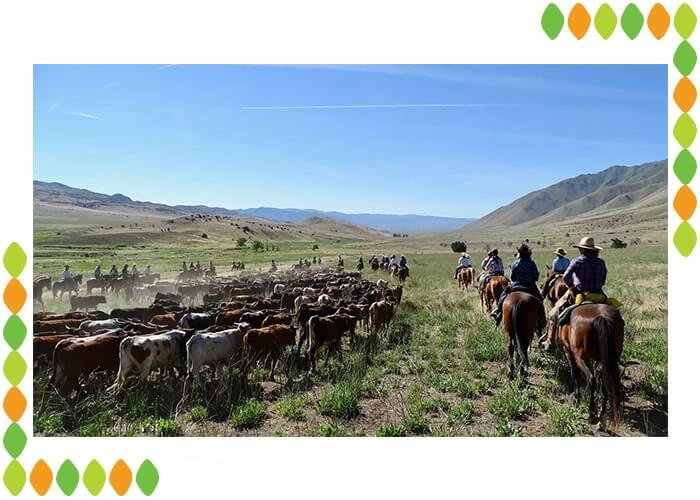
The cattle drives were a grueling and dangerous undertaking. Ranchers had to round up hundreds of heads of cattle, hire a crew of assistants to help drive them, and then set out on a journey that could take several months and cover hundreds of miles. The cowboys had to navigate rough terrain, cross rivers and streams, and fend off attacks by rustlers, Indians, and other hazards of the trail.
In Great Western Trail, players are ranchers seeking to make a profit from the great beef demand in the 19th century as they herd their cattle from Texas to Kansas City and send them off by train to be sold in the market. After every arrival to Kansas City, players return to Texas to begin another journey.
But the path is not an easy one, with hazardous terrain, Indian attacks, and rival ranchers looking to undermine others. Players must hire a crew of workers, collect money, build buildings, complete objectives, tend to their herd, and more in order to win the game.
So if you want to take your chances in the cattle business, keep reading to learn all about the beloved board game, Great Western Trail.
Great Western Trail Board Game Overview; The Wild West Comes Alive

Great Western Trail is a strategy board game designed by Alexander Pfister for two to four players and was first published in 2016 (also mentioned on our list of best board games without language barriers). A second edition came out for the game in 2021 with slight additions to the core gameplay, revised artwork, and a one-player game mode. It is currently ranked as the 15th best board game of all on BGG.
The game is set in 19th-century West America and simulates the cattle drives that were a major part of the country’s economy. In this game, players take the role of cattle ranchers who try to make the most profits by selling their herds for the highest possible price, which needs strategy and planning.
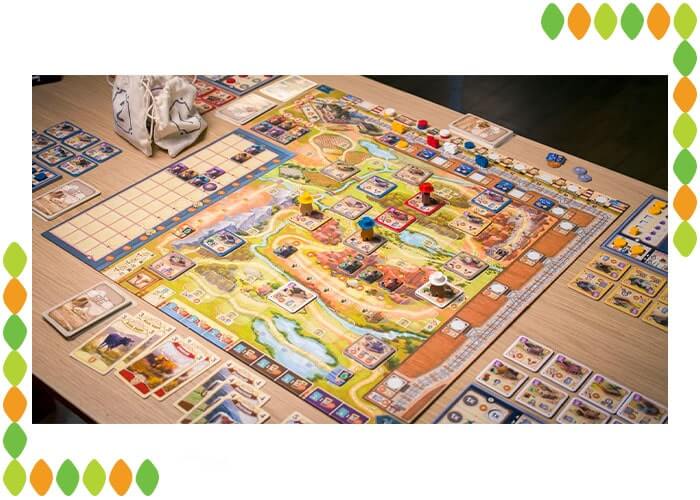
Each round, players move along a path from Texas to Kansas City with various spaces and routes called the Great Western Trail. This trail includes different spaces where players can take actions, like hiring workers, visiting the cattle market, managing their hand of cards, and so on. There are also some obstacles in the way of the ranchers. They could be Indian teepees waiting to strike, other players’ buildings, or natural hazards like floods, droughts, and rockfalls.
The cows are represented by cards and each breed is shown with a different color and value. When players reach Kansas City, they gain profits based on their hand of cards, but they also perform actions and gain resources with these cards. Players start the game with a starter deck of cards, and they can acquire better cards throughout the game.
If you like two-player board games, read The Best 2-player Board Games article.

The main mechanic of the game is hand management. Players draw cards from their personal decks and add them to their hands, which they use to take actions on later turns. However, players must also manage their hands carefully, deciding which cards to play and when to play them.
On each turn, players must choose which cards to play and which cards to save, balancing their need for resources and abilities, with the need to maintain a strong hand for when they reach Kansas City. The player who manages their hand effectively, can maximize their efficiency and gain an advantage over their opponents.
Great Western Trail Board Game Gameplay; Mooo-ve on to Kansas City
Now that we got the basics down, it’s time to learn exactly how to play Great Western Trail!
Setup
To set up a game of Great Western Trail, begin by setting up the game board. First, place the worker tiles, hazard tiles, and teepee tiles all facedown. The backs of these tiles are marked with either 1, 2, or 3. Separate the tiles by their back number and shuffle them facedown. Now draw seven random tiles from the 1 pile and place them on the board according to the tile. Teepee tiles are placed in the Indian trade section, and hazard tiles are placed on their corresponding spaces around the board.
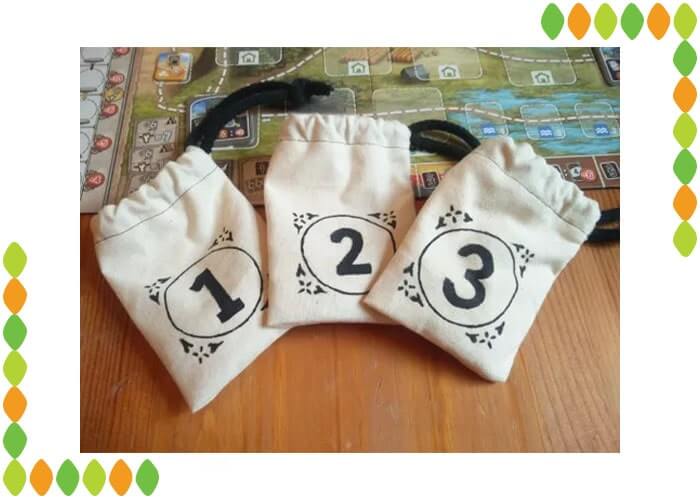
Place the job market token on the topmost dashed space in the job market. This token counts as a time marker for the game and moves down as the game progresses. Whenever it moves off from the track, that round is the final one, and the player who removed the token gains it along with two victory points as a reward.
Now you must set up the job market track itself. Reveal a random tile from the 2 pile. These tiles are all workers, either cowboys, craftsmen, or engineers. Place the tile in the top row of the job market track, under the symbol depicting your game’s player count (place it under three in a three-player game).
Draw more tiles from the 2 pile and fill the rest of the row. Do the same for the next row, leaving the space with the job market token empty. Depending on your player count, the number of these tiles is between three and seven.
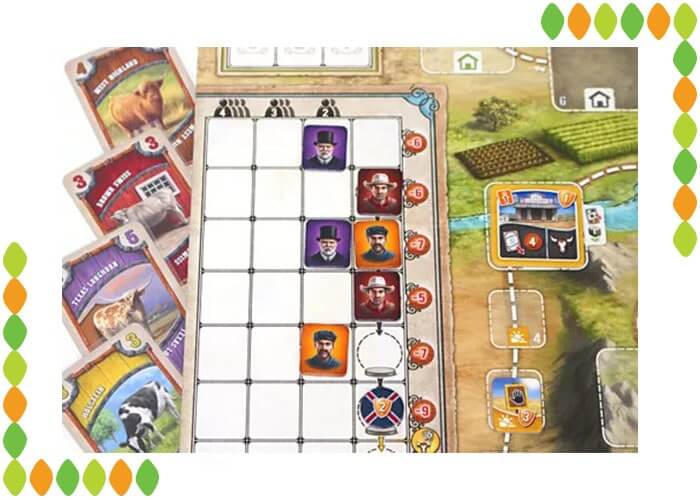
Take the seven brown-colored neutral building tiles and place them on each of the seven neutral spaces on the game board. For beginners, it’s recommended you place each tile on the space with its matching letter (A to G), but once you get familiar with the game you can place them randomly to change the course of the game.
Now fill the foresight spaces in Kansas City with tiles. Draw two random tiles from each pile and place them in their respective spaces on the foresight track.
Next, create the cattle market by shuffling the market cards which consist of yellow, red, blue, brown, and purple cards. Depending on the number of players, draw random cards and place them beneath the board in the cattle market, sorted by color. (There are 7 cards for two players, 10 for three, and 13 for four players.)
Shuffle the objective cards and place them next to the board within reach of all players. Reveal four objectives and place the coins in a general supply, and move on to each player’s individual setup.
Each player chooses a color and receives a player board in that color, as well as a player count tile for three or four-player games. This tile slightly changes the rules for movement and fee payments.
Give each player one cattleman, one engine, one certificate marker, and 14 discs as well as 10 building tiles in their color. Place the cattleman in Texas, the engine on the starting space of the railroad track, the certificate marker on the topmost space on the player board, and the 14 discs on the colored spaces all around the player board to cover up actions.
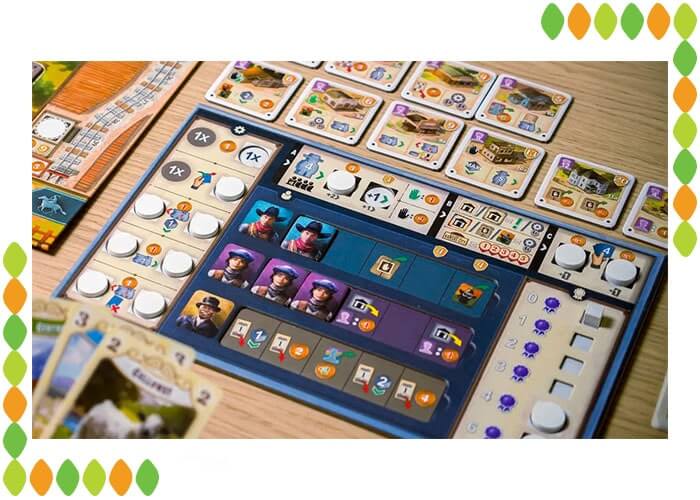
The building tiles each have two sides, one marked with “a“ and another with “b”. Again, it’s recommended that beginners use the a-side for all buildings, but if all players are familiar with the game, you can use them in any way you like. Just keep in mind that all players should have the same tiles during the game. If you decide to use the b-side for the third tile, all players should follow that rule.
Each player receives a deck of 14 cards as their starter deck (with grey, white, black, and green cards) marked with a star in their color. Players must shuffle their decks and draw four cards to begin the game.
Shuffle the four starting objective cards and deal a random card to each player. Finally, choose a starting player and give them six coins. The player to their left gets seven coins and so on, and you are ready to embark on the journey that is the Great Western Trail.
How to Play
On each turn, players must carry out the following phases in order;
- Move along the trail to another location
- Take actions in the location
- Fill hand with cards
Players each have a certain number of spaces they are allowed to move. The main location in the game is Kansas City where players gain victory points and money. Any other tile between Texas and Kansas City is a location players must move through, and can take actions.
These spaces could be neutral buildings, buildings built by players, hazards, or teepees. Wherever you decide to place your cattleman, is the location where you take actions. If you’re in a neutral building or a building of your own color, you’re allowed to take the actions depicted on the tile. But if you stop on another player’s building, a hazard, or a teepee, you may only take an auxiliary action shown on the left of your player board.

Paying Fees
On all teepee and hazard tiles as well as some of the player’s building tiles you can find green and black hands. When passing through locations containing these hands, players are required to pay coins as a fee. The amount of the fee is determined by the color of the hand and the player count tile on each player’s board.
When passing teepees and hazards, players pay the fee to the bank, but when passing through buildings of other players that include hands, the fee must be paid to that player. This means players can gain an advantage over their opponents by placing these buildings along the trail.
Actions
Once you pay any fees and reach your desired location, you may perform three types of actions;
- The local actions depicted on the tiles
- The auxiliary actions shown on the left side of your player board
- Kansas City
You are allowed to perform the actions on a tile only if it’s your own building or a neutral one. These actions help you in various ways. You could hire workers from the job market, build more buildings, buy cows, gain money, remove hazards, move your engine, and many more. The order of actions is up to the players. Also, some of these locations allow players to discard a certain card and gain money or certificates.
On other tiles, you only have the option to perform an auxiliary action. This could be gaining money, drawing a card, moving the engine, etc. Keep in mind that some tiles include a double auxiliary action which you cannot perform on other tiles.
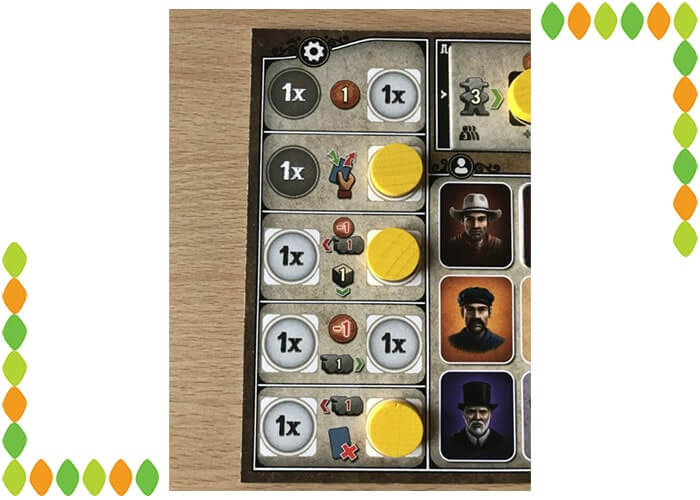
Kansas City
Whenever a player reaches Kansas City, they must perform a series of actions in order. First, choose three tiles from the foresight track, one from each number, and place them in their corresponding locations.
Next, reveal all of the cards in your hand and gain income from them. To do this, add up the values of each different type of cattle you have in your hand. This means two or more cards of the same color are only counted once. In other words, you want to not have any cards of the same color when you reach Kansas City.
You could also increase this value by adding certificates to it. Mostly, certificates are awarded to players according to their actions and can be spent once. But there are also some permanent certificates that players can buy and use every time they reach Kansas.
Once you add up the certificates and calculate the final value, take that many coins from the supply as a reward. Then discard all of your cards and draw a new hand.
The final step in Kansas City is to deliver your cattle to a city along the railroad. The final value of your cattle determines how far you can reach. Each city contains a number and players can reach the cities with numbers equal to or lower than their cattle value. You can only deliver to each city once throughout the game, except for Kansas City and San Francisco which are the first and last cities on the track.
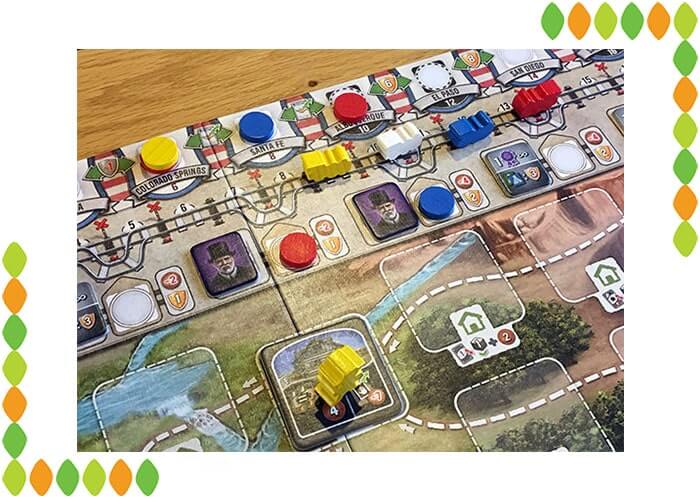
Once you decide on which city you want to deliver to, place a marker of your color from your player board on that city. If the city has a white outline, you can only place markers from white spaces on your board, and if the city has a black outline, you can place markers from black spaces.
Removing these markers from your player board gives you a boost in the game. They either unlock auxiliary actions, or increase the movement, hand limit, and certificate limit of players. Also, if you manage to deliver cattle to two adjacent cities and place markers in both of them, you gain the benefit shown between them.
When placing a marker in a city, your engine must have reached or passed that city. If your engine is behind on the track, you must pay coins equal to each cross that stands between your engine and that city. After completing the delivery phase, replenish the empty spaces on the foresight track and place your cattleman back in Texas to do it all over again.
Game End
The game goes on in this manner until a player must add workers to the job market, and causes the job market token to fall off the board. The active player takes that token gaining two victory points, and each player takes on final action and the game ends.
Players take the scoring pad and write down their achieved points in 11 categories, such as constructed building, collected hazard tiles, cattle in the deck, etc. The player with the most points is the winner of the game.
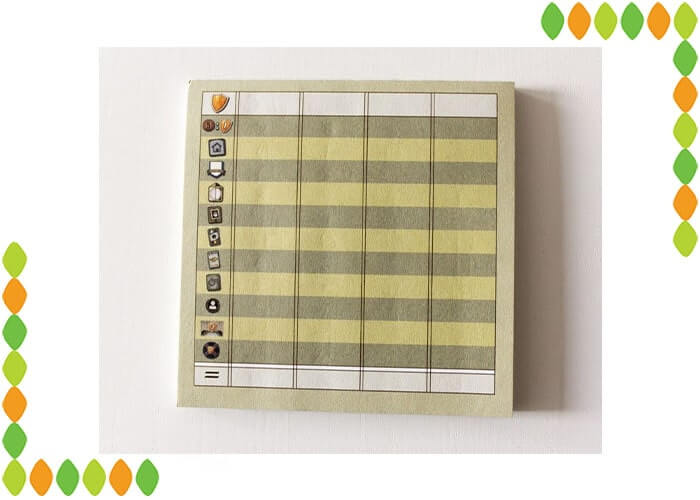
Final Thoughts
In conclusion, Great Western Trial is a popular and highly engaging board game that has stood the test of time and combines several mechanics in a simplistic way. It requires strategic planning, as players must find the balance between their need for resources and the need to create a strong hand and deck while navigating through the hazards of the Wild West.
It’s also a highly replayable game, with a variety of strategies and paths to victory. The game’s components are of high quality and visual appeal, especially in the second edition, adding to the immersion of the game’s narrative. Great Western Trail is a great addition to any board game collection and a must-play for fans of strategic and thematic board games.

